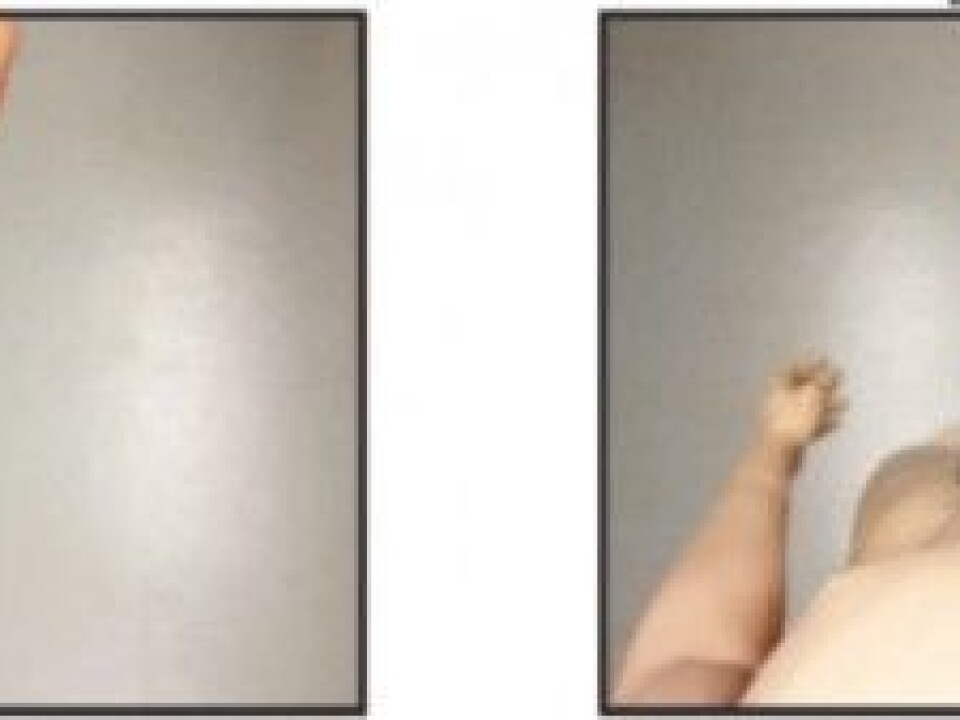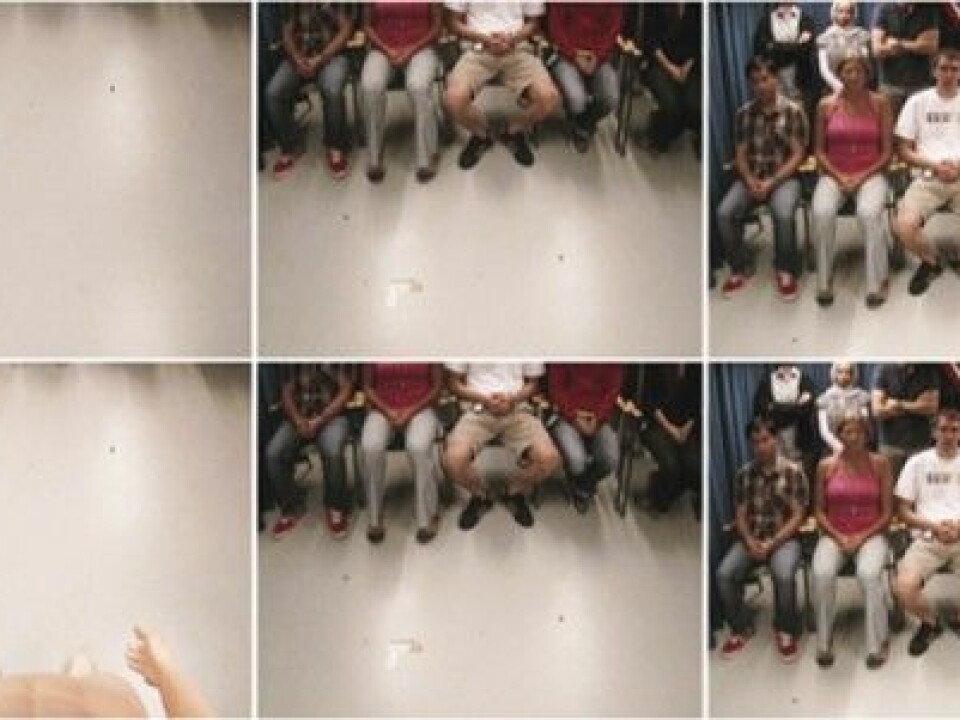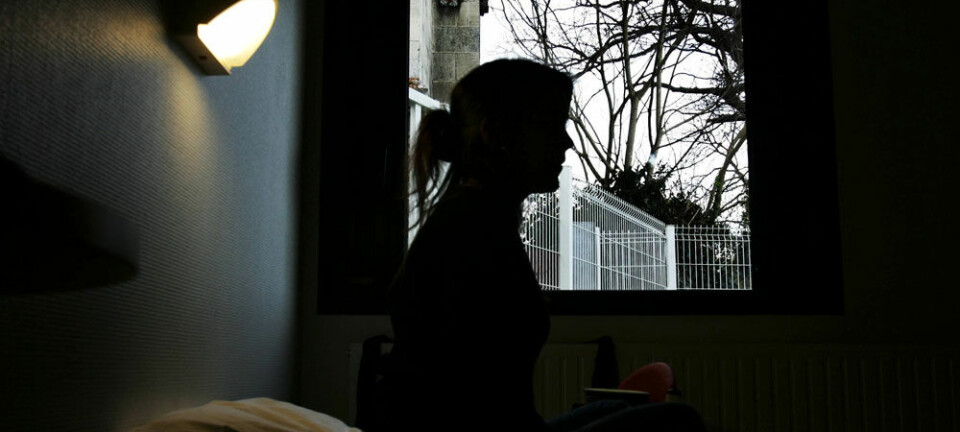
Towards an invisible and confident body
Researchers think an experiment which produces the sensation of having an invisible body might be helpful in treatment of social anxiety.
You look down at your body but it isn’t there. Someone touches you with a paintbrush and you feel the bristles running across the spot where your stomach should be. You seem to be invisible.
Then a knife is moved towards your invisible stomach. How do you react?
Virtual Reality
Researchers at Sweden’s Karolinska Institute sought answers by subjecting volunteers to experiments with virtual reality (VR) goggles.
A person wearing them sees an imaginary, three-dimensional landscape through small screens – one for each eye.

The volunteer looks down at his feet. But none are there, just a floor. The VR goggles display images from a camera close by. The camera points downward in the same direction as the gaze of the test subject.
Brush trick
The researchers then perform the trick which creates the illusion: They stroked the person’s stomach, legs and feet with a brush while doing the same thing in thin air in the visual field of the camera, which was mounted on a tripod.
They found that the motions of the two brushes had to be made simultaneously and in the exact right spot to achieve the effect. So they practiced until they got this completely synchronised.
This was the first time an entire body was made to be experienced as invisible in a test, according to the study, published in Nature Scientific Reports.
Woman accepted a male body

The researchers also placed a window dummy in front of the camera and followed the same procedure, with two sets of brushes and knives. The test persons felt the brush but what they saw through the VR goggles was the brush coming in contact with the corresponding parts of the mannequin and the knife almost stabbing it.
When they were touched by the brush in the same procedure, they now experienced the mannequin’s body as their own. This experience was independent of their gender. The window dummy was apparently male but many of the test persons were women.
“An earlier study has shown that the gender of the mannequin is inconsequential. Women experience as strong an illusion of body ownership, whether it is a male or female mannequin,” writes the first author of the study, Arvid Guterstam, in an e-mail to forskning.no.
Self-image
What did apparent invisibility do for a test person’s self-image? The scientists wanted to know and subjected the volunteers to another challenge.
They placed a group of other researchers in the room. These were instructed to stare seriously and a rather critically at the camera which fed the VR goggles.
In this test the volunteer was asked to look up at this audience.
Seeing a recording
The researchers had pre-recorded a video instead of displaying a simultaneous, real-time feed from the camera. But the camera had recorded the changing field of vision which would be made if the person were to raise his or her head to meet the critical eyes of the audience.
“We instructed the volunteers that the research leader in some cases would be carefully lifting the VR goggles and that they should follow this movement,” writes Guterstam.
“This is how the research leader synchronised the sweep of the video camera with the movement of the test person’s head,” he explains.
The results were vivid: With a mannequin body the volunteers experienced more mental stress than when they felt invisible. This was determined by their pulses and control questions.
Supports brain research
The researchers think this experiment can be useful in several ways.
First of all, it showed that the test works. It is possible to create an experience of invisibility.
This reinforces brain research showing that brain functions link to the experience of being in a body.
New attitudes
Secondly, these cognitive functions can be exploited to create new experiences and change attitudes.
For example, earlier tests have shown that light-skinned people who are equipped with a virtual dark-skinned hand are less likely to exhibit racial prejudices.
Treating social anxiety
Thirdly, virtual experiences can be used to treat people for social anxiety in what is called virtual reality exposure therapy (VRET).
“We propose that the illusion be used as an initial stage in VRET, in which the patient experiences a stressful situation while sensing that his/her body is invisible.”
“Then the visibility of their bodies can be gradually increased. We think this strategy could have a good clinical effect in sub-groups of patients,” write the researchers in the study.
Knife to the stomach
What about the knife that threatened the invisible stomachs of the volunteers? The researchers measured the electrical conductivity of their skin as the knife appeared to come closer and closer to their abdomen, stopping right in front of the stomach before being withdrawn.
Skin conductivity is commonly used to measure pain, fear, surprise and other strong reactions. The conductivity increases in part because emotions raise levels of perspiration. Salty sweat acts as a conductor.
The researchers were thus able to register involuntary physical reactions by the volunteers showing that the VR goggle tests worked. Skin conductivity rose in the course of five seconds after the knife entered the field of vision of the VR goggles.
--------------------------------------------
Read the Norwegian version of this article at forskning.no
Translated by: Glenn Ostling










